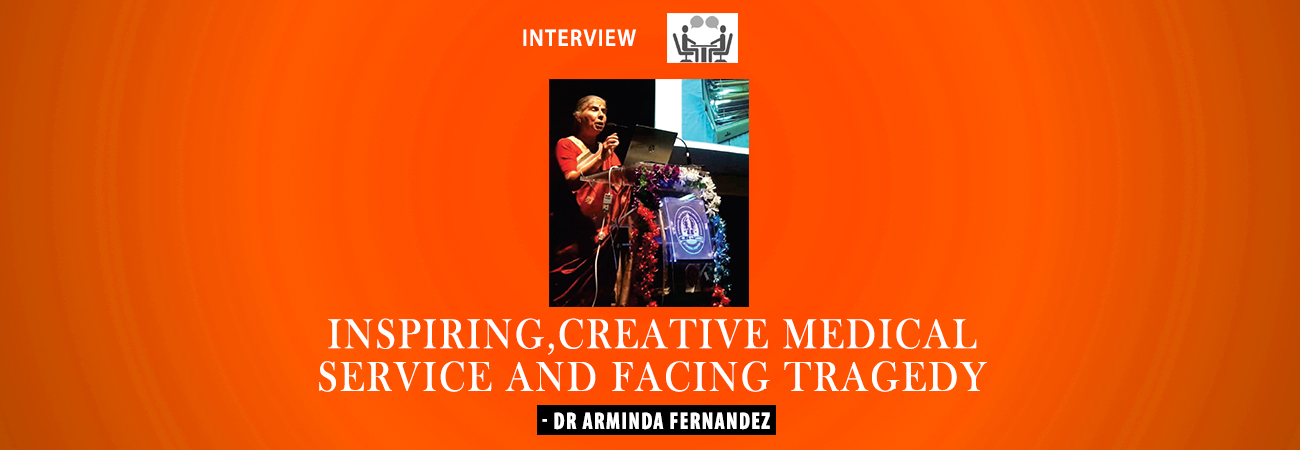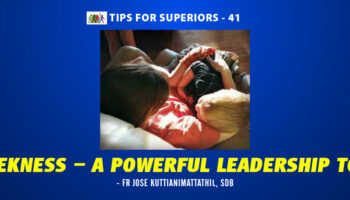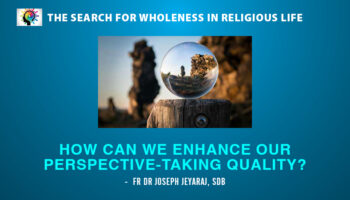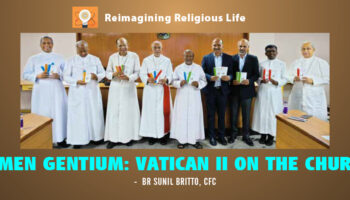- You come from a distinguished family of writers and literary figures. What made you choose a course in the sciences and become a doctor?
Yes, I come from a family of writers and had six siblings who took up the courses in Arts. My favorite subjects through school were, unfortunately, Maths and Science and I wanted to take up science. I personally felt that a world of Physics was not where I would be happy. Besides, ever since I was small, I wanted to be a doctor, as I felt compassion for the sick, including animals and birds. My parents, especially my mother was not happy with my decision, but I stuck to it.
- As head of the Neonatology Department in Sion Hospital, a famous Municipal Hospital, you had the experience of seeing many babies die. Did that prompt you to come up with some kind of solution?
When I joined Sion Hospital in the early 70’s, there was no department of Neonatology as such. Neonates were looked after by Pediatricians. The mortality rates of neonates were extremely high. Being a free Municipal hospital and a tertiary center, Sion Hospital admitted the poorest and sickest of mothers in labour and the seriously ill babies. Besides that, there was always a shortage of staff and money. Under these circumstances, I had to try to save the lives of neonates. I found that one of the commonest causes of death in these babies was infection and we looked at various cost-effective methods to save lives. These included getting rid of infected incubators, using warmers and lamps to maintain the baby’s temperature and exclusive breast milk to feed the baby. That is when we started the Human Milk Bank. We overcame the shortage of nurses by allowing mothers to come in and clean and feed their babies. There were many more strategies that we employed, which reduced the mortality rate significantly.
- You were Dean of the hospital for three years. What problems did you focus on at that time?
As the Dean, I had to look at the major areas in the hospital that needed attention. One such area was the Emergency Services. Sion hospital was the first tertiary hospital on the Eastern Express way. It was flanked by the Western and Central railways. We had the maximum number of accident victims admitted, as well as the most serious patients. We needed a state of the art Emergency Medical Services Department, and we built one. What was different is that it was done through donations, planned by an international architect and built by one of the best builders in the city.
The Intensive Care Units were also upgraded by donors. So was the kitchen. I realised that, if there is a good cause, there are many philanthropists who are willing to come forward and help the poor.
- You started Asia’s first human milk bank in Sion hospital. In what way did you see it as a solution to the problem?
Infections were one of the main causes of deaths in our babies. One way to reduce infections was to get rid of formula milk and bottles and ensure that every baby was fed human milk that had so many protective features. To ensure a continuous and safe supply of human milk, the only solution was to start a human milk bank, where milk from mothers who were tested, was collected in a hygienic environment, pasteurized and stored in a freezer and could be available anytime, for the sick babies whose mothers were not in a position to give their own milk. This was one way we saved the lives of the babies. When I started the milk bank, most of the people, including pediatricians, were not convinced of the significance of a milk bank. Today. thirty years later, milk banks are being opened all over the country because of the significant role it plays in saving the lives of sick neonates.
- What learnings did you make in all these years you worked in different capacities in the hospital?
I think that my most important learnings were that you are faced with what feels like insurmountable problems. But you need to really put your mind to it, work hard at it and you can finally come up with solutions. Patience and perseverance ensure success.
When you have thought of an innovation that would bring about significant change, don’t let anyone dampen your spirits. Continue even if criticised, and success will be yours. The world will follow you.
- In the same way, in order to find sustainable solutions to the problem of infants, children and women, mainly in slums in Mumbai city, you started the Society of Nutrition, Education and Health Action (SNEHA) in 1990. How did this organization contribute to the uplift of people living in the slums and in tackling the problem of gender violence?
The reason I started SNEHA is that I realized that only when mothers and babies were really ill, they landed in our hospitals. We saved some with great effort and huge costs, but others succumbed. It was more important to prevent malnutrition and illnesses by moving into the communities and changing their behavior patterns, like nutrition, care during pregnancy, immunization and accessing medical facilities in time. Sneha has worked across urban slums in Mumbai and other states and reached out to over a million families to reduce malnutrition in children and decrease maternal and neonatal deaths.
We have an excellent program on prevention of violence and have involved volunteers from the community, women, youth and even men, to identify and refer cases early, and more importantly to prevent violence. We also have counselors across slums and the medical hospitals and run the Nirbaya One Stop Crises Centre at KEM in Mumbai. Through our work, we have been able to ensure access to counseling for women and helped them with police and legal interventions, thus reducing violence in their homes.
- You lost your daughter in her 30’s to cancer. How deep was the wound created by her death? Did your faith sustain you during the dark times?
I accepted my daughter’s illness and death because of my deep faith. As a pediatrician I had seen so many parents lose their children and I felt I had no reason to complain. I was blessed to have a daughter who didn’t even once question God on why she had to suffer. She lived her life to the fullest and made the most of the situation; that gave me courage.
The wound created by the loss never heals. I sometimes feel I’m kept so busy that I don’t have the time to grieve, which again is God’s doing.
- On realizing that the lack of emotional support, pain management and counseling that your daughter experienced during her final days on earth, you decided to start the Romila Palliative Care Centre in 2013. You did not want your daughter’s death to go in vain. How did you go about this task?
Despite being a doctor, I was not aware about Palliative Care, which deals with all life-limiting diseases and tries to improve the quality of life of a patient and caregiver by relieving pain….physical, mental, social and spiritual.
I got in touch with doctors who were into palliative care at Tata Hospital, and decided to start a Palliative care center in her name under SNEHA. This center offers outpatient and home based services to patients. We have a team of trained doctors, nurses, counselors, social workers and other specialists. We were blessed to be given funds, space for our OPD, and have a large number of doctors and other volunteers, who are also trained to help.
It is difficult to offer free services when you need many professionals. Fortunately, many doctors and other professionals offered voluntary services and helped the existing staff to reach out to many more patients.
- What do you think have been the most significant contributions you have made to your profession?
The most significant contributions I have made to the profession are:
- a) Helping a core group of paediatricians to set up the sub-speciality of Neonatology in the country;
- b) Working significantly in the promotion of breastfeeding in the country;
- c) Starting the first Human Milk Bank in the country, way back in 1989;
- d) Moving from the hospital to the social sector, to impact lives of vulnerable Women and Children in the city, by using a life cycle approach;
- e) Working on Palliative Care, both for adults and children. This palliative care has not yet got the attention it deserves in this country.
10. You were also Medical Director of Holy Family Hospital in Bandra. What changes did you introduce there?
Nothing exceptional, but together with the cardiologists we started the iCare project that trains lay people in cardiac resuscitation, to prevent sudden cardiac deaths.
11. And now, at 78 years, you are still contributing to society. What inspires you to do that?
I sincerely believe that God carves a path for us to follow and that is just what I’m doing. I know that when I reach out to people, I benefit as much if not more, from that action. I’ll continue doing that as long as I am in a position to do so. I’ve received so much love in my life and I cannot but help loving others in return. Love translates into action—the action of reaching out in whatever way I can.
Dr Armida Fernandez is a leading neonatologist. She was Dean of Sion Hospital and Medical Director of Holy Family Hospital, Bandra. She is the founder and chairperson of SNEHA, an NGO that works on maternal and child health, gender-based violence, and adolescent health. She founded the Romila Palliative Care centre in 2017.
To subscribe to the magazine, click Subscribe





